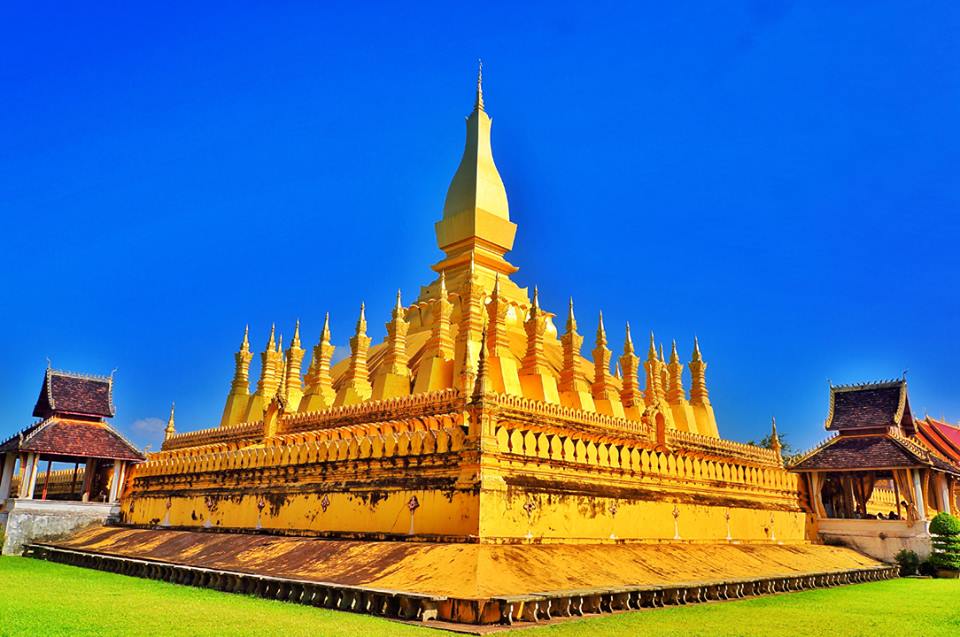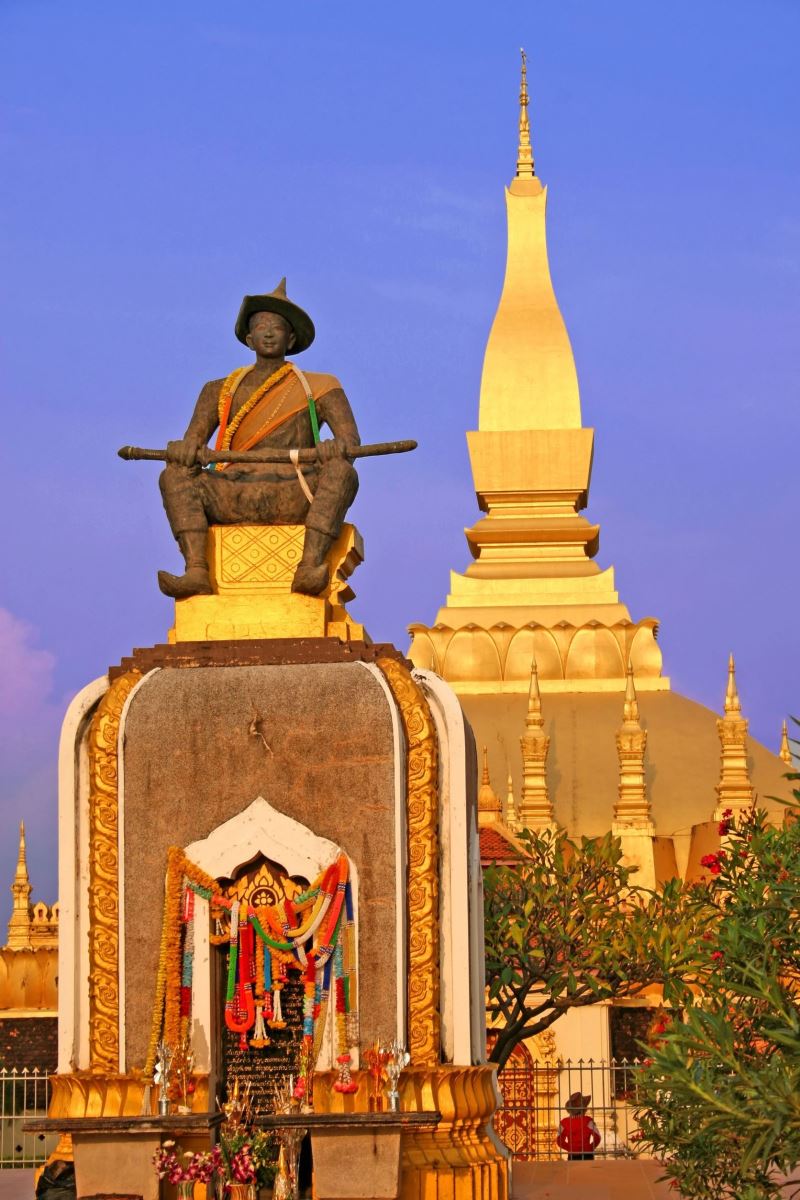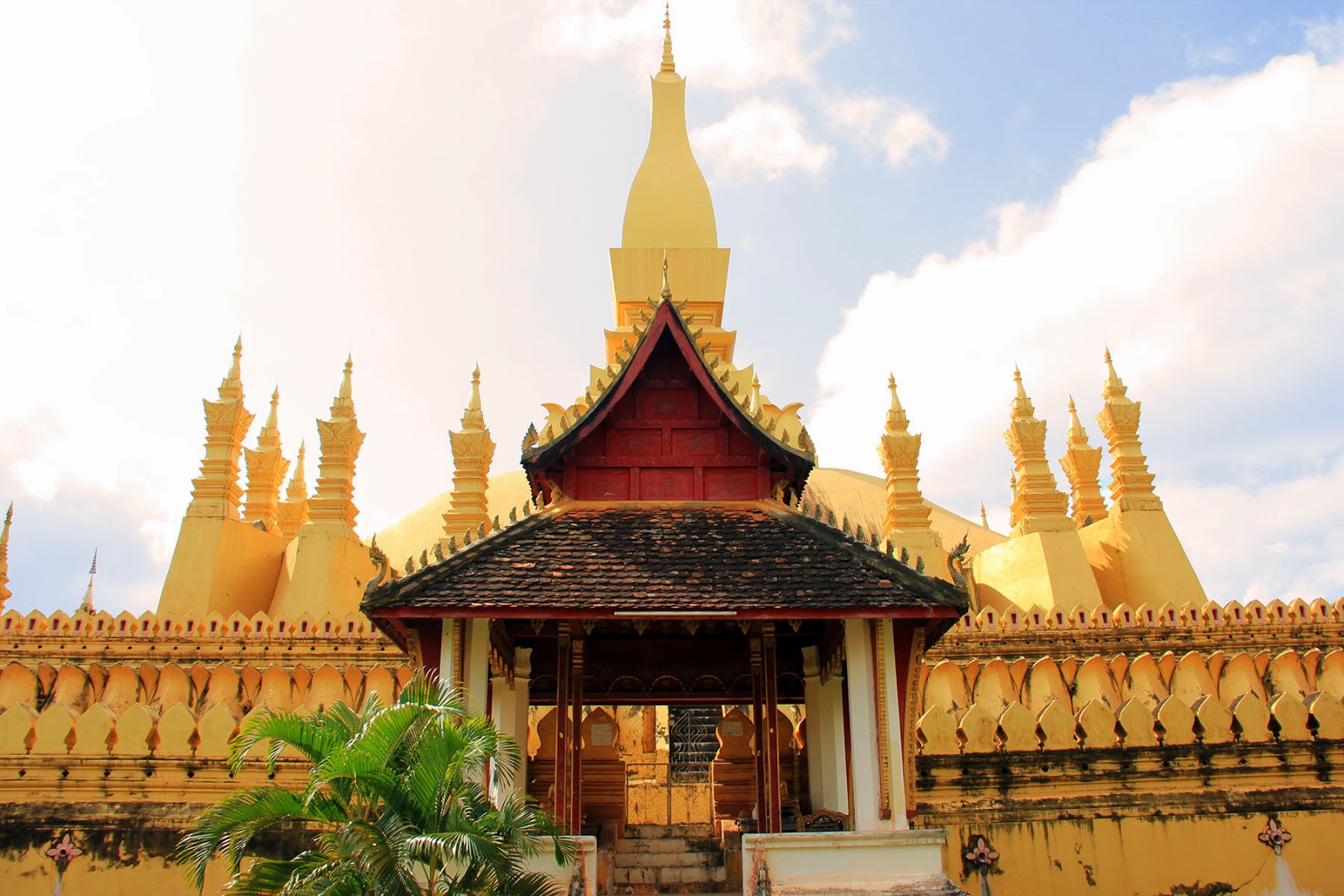According to the Lao people was originally built as an Indic temple in the 3rd century. Buddhist missionaries from the Mauryan Empire are believed to have been sent by the Emperor Ashoka, including Bury Chan or Praya Chanthabury Pasithisak and five Arahata monks who brought a holy relic (believed to be the breast bone) of Lord Buddha to the stupa. It was rebuilt in the 13th century as a Khmer temple which fell into ruin.
In the mid-16th century, King Setthathirat relocated his capital from Luang Prabang to Vientiane and ordered construction of Pha That Luang in 1566. It was rebuilt about 4 km from the centre of Vientiane at the end of That Luang Road and named Pha That Luang. Its official name was Pha Jedi Lokajulamani, which means "Precious Stupa of the World". The bases had a length of 69 metres each and was 45 metres high, and was surrounded by 30 small Stupas. It is covered in several thousand pounds of gold leaf.

It was destroyed by the Thai invasion in 1828, which left it heavily damaged and left abandoned. It was not until 1900, when the French restored to its original design based on the detailed drawings from 1867 by the French architect and explorer Louis Delaporte. However the first attempt to restore it was unsuccessful and it had to be redesigned and then reconstructed in the 1930s.

The architecture of the building includes many references to Lao culture and identity, and so has become a symbol of Lao nationalism. The stupa today consists of three levels, each conveying a reflection of part of the Buddhist doctrine. The first level is 223 feet by 226 feet, the second is 157 feet along each side and the third level is 98 feet along each side. From ground to pinniacle, Pha That Luang is 147.6 feet high.

The area around Pha That Luang is now gated, to keep traffic out. Previously visitors could drive around the whole complex. The encircling walls are roughly 279 feet long on each side and contain a large number of Lao and Khmer sculptures including one of Jayavarman VII.












